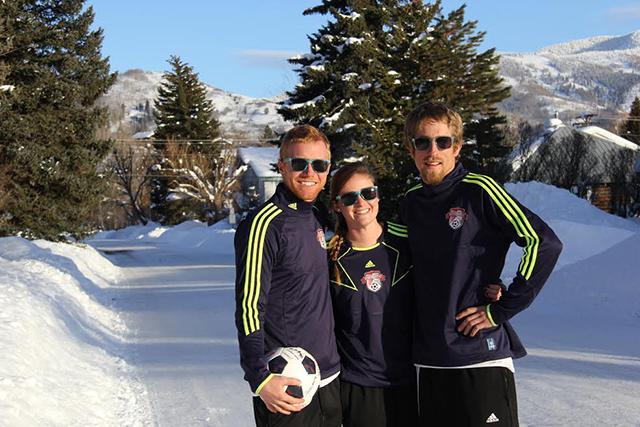A group of Colorado soccer coaches, writers, filmmakers, musicians, artists and teachers hope to embark on a journey in the name of soccer on Jan. 27.
The journey, which they call “Camino a La Copa,” or “Road to the Cup,” will take the team to 12 countries in North, Central and South America, where they plan to host soccer clinics for youths. The children can use the sport to promote a “positive force” in their life, according to Roddy Beall, a Spanish-English medical interpreter and the group’s leader.
The trip will last about five months and culminate at the World Cup in Brazil this summer, along with a documentary they hope to make about their experiences.
The itinerary to Brazil, however, remains tentative because the group designed it around connections they made with orphanages, schools, youth organizations, soccer clubs and people they could stay with. For example, one stop will take place at Club Deportivo Dan, a school in Peru for at-risk youths that uses soccer to promote good life choices, according to Beall.
“These might be places that don’t have soccer clubs, all the amenities, the equipment, so hopefully we can share soccer with them,” Beall said. “But we think we are going to learn more than they will and hopefully teach people back home.”
Beall said he always wanted to visit the Spanish families in the United States and go to places to connect with people who live in other parts of the world. He said he saw soccer as a way to accomplish this and provide “direction” for youth, so he enlisted the help of his friends and fellow Steamboat Soccer Club coaches Brian Morgan, who works as a high school science teacher, and Jordan Edwards, a former N.C. State women’s soccer player. Other trip participants include Knute Sands, Julie Wernig, Sam Huntington and Suzy Bouzo.
“The three of us just started to get on board and build the adventure,” Beall said. “We have this dream and vision. It might turn out to be this amazing trip and we get it all on film, or [a presentable film] might not happen.”
Regardless of the outcome, Beall said he is certain the trip will change him. The team has since grown to seven participants, who each use soccer as a metaphor while they coach, according to Morgan.
“Soccer is everything else and everything else is soccer,” Morgan said. “We can teach lessons through soccer. It’s about being connected with one another, being selfless, passing the ball instead of holding on to the ball, working hard for one another; all of these are extended metaphors for life.”
Edwards said she sees soccer as a way to unite people as well, especially after having the opportunity to take a few international soccer trips.
“It was on these trips that I truly saw what soccer is all about,” Edwards said. “I got to play with and against people that don’t even speak the same language as me; however, soccer was our common bond that broke through all existing barriers.”
Preparation for the trip included establishing contacts and lots of research into camera operation, video editing, software and website design (done by Edwards and Morgan). The group also had to sift through information about the different regions and brush up on their Spanish and Portuguese, according to Beall and Morgan.
For filming, Beall said that the group plans to use a number of GoPro and point and shoot cameras.
“When we get back we will be looking at all the material we have and try to see what narrative might be told in film form,” Beall said.
The team said they hope an independent film company will help them edit the documentary, but they have not heard a response from any companies yet.
To keep fans up-to-date, the team will upload a weekly video to its website, as well, to show “what’s going on in these countries,” Edwards said.
“We also hope that our fans back home can watch the weekly videos and learn something about these places, get excited about the World Cup, and feel a connection with the international soccer community,” Beall said.
In doing so, Beall said he hopes the videos will also generate more publicity for the project and attract potential donors and funders.
Monetary donations received thus far, along with tangible donations such as soccer gear and equipment, add up to a few thousand dollars — not nearly enough to pay for the estimated $30,000 trip, according to Beall.
“We’re taking a big risk,” Beall said. “We’ve all quit our jobs because we believe in it.”
The team plans to use a 15-passenger van they call the “chariot” for the long drive, which they retrofitted for extra storage, sleeping quarters and secret containers to hide their electronics and other valuables, according to Edwards.
The crew, who may experience difficulties when entering each country, said that crossing borders is a concern. The passage from Panama to Colombia, known as the Darién Gap, is particularly difficult because the roads through there are often impassable.
“In order to cross the Darién Gap to get to Colombia, we will have to hop on a sailboat for five days and ship our vehicle by boat,” Morgan said.
Other worries include safety, exposure to foreign diseases and the durability of the van.
For those interested in following Camino a La Copa throughout their trip, or donating to their cause, you may visit their website at http://www.caminoalacopa.com.








